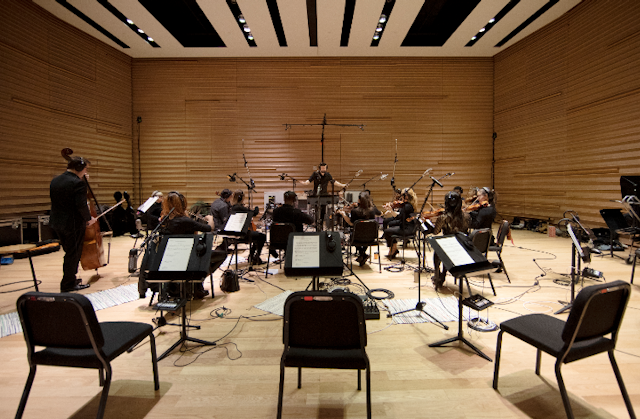Sonos unveils ad-supported radio channels and Phillip Glass audio brand
Sonos, the premium audio company, has launched 30 ad-supported streaming radio channels on its app in partnership with Napster as part of a wider software refresh that saw Phillip Glass compose its first-ever audio brand. The update will be pushed on to devices across 10 million homes from today (21 April).

Sonos unveils ad-supported radio channels amid digital refresh
A year ago, Sonos research identified that radio encompassed half of all listening time on its hardware. Dmitri Siegel, vice-president of global brand at Sonos, said: "We have always had a strong music POV as a brand. The scale of radio listening came as a bit of a surprise, however."
Sonos moved to create and even curate radio shows to meet this need.
Sonos Radio
More than 30 genre stations were created, each monetised with ad breaks programmatically sold by Targetspot .
Siegel said: "Customers shared with us that music discovery is important to them, with two out of three reporting that they actively search out new music each week." The push will see users engage in the Sonos app for longer, rather than casting to the devices from other services like Spotify. In the coming years, these stations will be tailored to the tastes of listeners.
Additionally, a signature station called Sonos Sound System serves as a 'featured' panel in the app. This is ad-free and will host new and well known music, behind-the-scenes stories and guest artist radio hours with input from Sonos curators. Its priority placement in the app will attract a strong flow of listeners.
Next, Sonos commissioned ad-free channels curated by musicians such as Thom Yorke, Brittany Howard of Alabama Shakes and David Byrne of Talking Heads, as well as Third Man Records.

Siegel said: "We started with the observation that there was a lot of radio listening on our platform, and that our experience was really broken. We basically hadn’t touched the radio experience in a decade. The navigation was cumbersome, the offering incomplete and the way it sounded wasn’t great."
And there will be a strong pull to continue curating top artists on to the platform. As Siegel put it: "Part of what makes it so special is that we have built the output hardware as well. Sonos Radio is going to sound amazing every time because it’s always going to be coming out of our hardware and we can optimize for that. That’s a difference that artists really respond to. They know that anything they put on Sonos Radio is going to be heard in exceptional sound quality."
The latest updates look to bring radio consumption in line with the rest of the experience. Siegel makes clear that this isn't a Spotify-killer – it's not necessary even there to help sell more devices. It could keep listeners in the Sonos family, however, and help them get more utility out of the devices.
"We weren’t setting out to make a streaming service or to attract a massive new audience. We already have our audience so we could tailor the experience to them."
For that broader listening experience, Sonos has also opened up easy access to more than 60,000 radio stations via partnerships with TuneIn Radio in the UK and iHeartRadio in North America. Location will play into these suggestions, as will favourites. Global radio and Radio.com in the US will be added in the coming months to expand the library.
Creative
Over the last two years, Sonos has been subtly moving its messaging away from hardware and towards the broader goal of ‘brilliant sound’. On the design front, that meant shifting away from a techy, clinical aesthetics towards a looser palette that could be employed across numerous devices and locations.
Previously global creative director for Patagonia for six years and the head of marketing for Urban Outfitters, Siegel is now looking to bring this craft into the audio, visual and digital spaces Sonos needs to be.
Setting a high bar for this, he commissioned Sonos’s first-ever audio brand with the help of composer Phillip Glass – something Siegel admitted had been on the agenda for a while.

"I’ve wanted to do it in the past but there is a quality bar that’s very important for us. Our logo is absolutely beautiful and our name is brilliant. Honestly, it was a bit daunting to consider doing sonic branding that could rise to that level. But with Sonos Radio we basically had no choice. People were going to click that button and hear our brand. It was honestly an existential challenge for me."
Glass was top of the list and the team ecstatic to secure the composer's services. "Beyond the fact that he’s one of the greatest composers of the last 100 years, he also uses Sonos so we didn’t have to worry about whether he believed in or understood the product."
It is now Sonos's sound experience leader Giles Martin's role to ensure the sonic logo is embedded into the whole listening experience and app. Siegel calls this the "sonic DNA" and concluded: "We now have a palette of sounds that will be the source material everywhere our brand is heard."
Sonos was one of the first players to develop wireless speakers. But with the technology becoming more accessible, connecting with wifi, mobile devices and smart speakers, the firm has had to rethink its role in the audio ecosystem.
Software and experience have become a vital part of this. Earlier this year, it came under fire for announcing that it will not be updating the software on some of its older devices, which it claimed couldn't meet the demands of the latest software.
As a compromise, older devices were to be left on a separate operating system. However, long-time customers were offered a 30% discount to update to a newer set of devices that could handle the OS.


